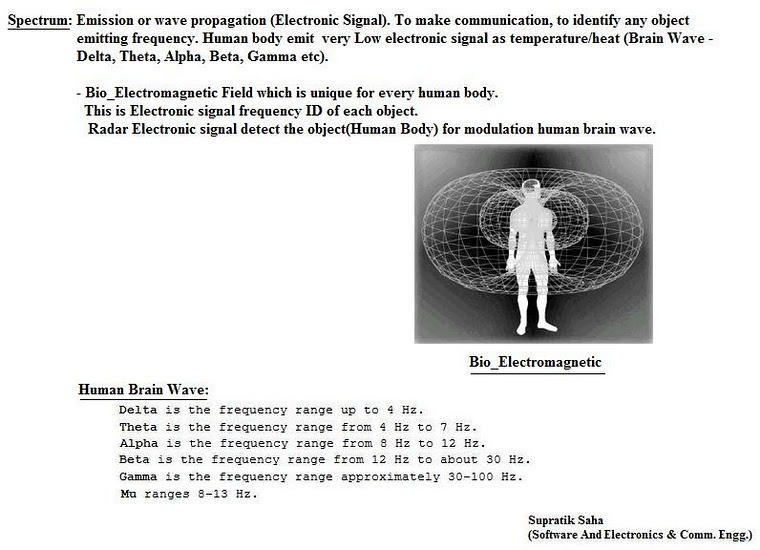FOIA Request Accidentally Provides Government Mind Control Files

A FOIA request by investigative journalism website MuckRock, resulted in the release of some bizarre documents pertaining to government mind control programs involving psychotronic weapons.
MuckRock originally requested documents related to terrorism threats from the Washington State Fusion Center, a division associated with the Department of Homeland Security.
MuckRock is a non-profit publication that makes thousands of FOIA requests, calling itself a collaborative repository of public records and investigative journalism regarding government, politics, and social issues.
In addition to the information MuckRock requested, it was given a number of pictograms showing potential uses of psychotronic weapons used for things like mind control, microwave hearing, and remote brain mapping.
The first graphic shows the outline of a woman’s body pointing out different areas that could be remotely controlled, induced with pain or pleasure, and stimulated in strange ways. One of the arrows points to the center of the head and reads “forced manipulation of airways, including externally controlled forced speech.”

Another graphic shows the use of remote brain mapping and mind control by use of helicopters, trucks disguised as communication vehicles, and radio towers. It shows what appear to be wave signals penetrating walls of houses and controlling individuals or groups of people, as well as the different resonance frequencies needed to control various areas of the brain.

One page contains a website URL, raven1.net, which leads nowhere, while another comes from someone named Supratik Saha, a software and electronics engineer.
Scientific American pointed out that one of the graphics was included in an article published by Nexus magazine, describing NSA signals intelligence capabilities and Project ECHELON, the government data collection program long believed to be a conspiracy, until whistleblowers proved its existence.

Why the WSFC sent MuckRock these graphics is still a bit of a mystery. The website says it’s possible it could have gotten mixed up in documents meant to be sent elsewhere or they may have belonged to an intelligence officer collecting data that were misplaced. MuckRock called the agency’s office to ask what happened, but have heard no response yet.
It would come as no surprise if the government, or an agency like the NSA that acts covertly and autonomously, has been researching or actively running a program with these capabilities.
The prospect of psychotronic weapons isn’t that farfetched either, with the government’s history of similar programs during the Cold War and the multitude of people who believe they have been victims of such attacks. Not to mention, the reality of attempted mind control programs like MK-ULTRA and the NSA’s Project ECHELON, that have set precedent for the government’s clandestine agenda.
Whether a program like this is legitimate or not, it’s at least on their radar.
Mysterious Booms Heard Around the World Leaving People Perplexed

In recent years, there have been hundreds of reported cases of startling, deafening booms that have shaken entire cities across the globe. Some say the noises have terrified them and their pets, or that the mysterious booms sound as if they’re coming from their own living rooms.
Others give more colorful analogies, describing the booming as someone firing a cannonball off a boat. But one thing is for sure: many people are experiencing earth- and house-shaking booms that defy explanation — and there are a multitude of guesses as to what’s causing them.
Loud Booms Heard Around the World
Though reports of mysterious booms have not been broadcast on national television, stories of them have been echoing through a network of communities. The penetrating sounds have been heard all times of the day and night, and residents of the areas impacted have flooded 9-1-1 dispatches, as well as local television and radio stations, with accounts of being scared out of bed — and trying to get to the bottom of whatever it is that’s disturbing the peace and setting off car alarms.
According to one report on March 26, 2019, a loud boom heard across several counties in the Piedmont Triad area of North Carolina was massive enough to register on seismographs. The explanation? Authorities attributed it to an earthquake.
But a few months prior to the North Carolina events, similar loud booms occurred not too far away, in Maryville, Tennessee, as well. Experts at the United States Geological Society (USGS) initially concluded that the booms were earthquakes, but later changed their minds and reported that they were caused by a nearby quarry blast.
Later, USGS authorities again changed their story and declared that the sound was the result of an earthquake caused by a quarry blast. And then, Carl VanHoozier, Community Relations Manager at Vulcan Materials Company, informed Knoxville’s WVLT News that a quarry blast couldn’t have caused such a ruckus.
Next, Robert Hatcher, PhD, University of Tennessee’s distinguished professor of geology, came to the fore and told WVLT News that the earthquake idea was nonsense. He said, “‘Usually a rumble, people who have been in earthquakes describe the noise as a train that comes in. It’s a rumble that comes in, that’s the earthquake’s way of coming through the earth. And so you hear a rumble, there’s not a boom or something like that.’”





































